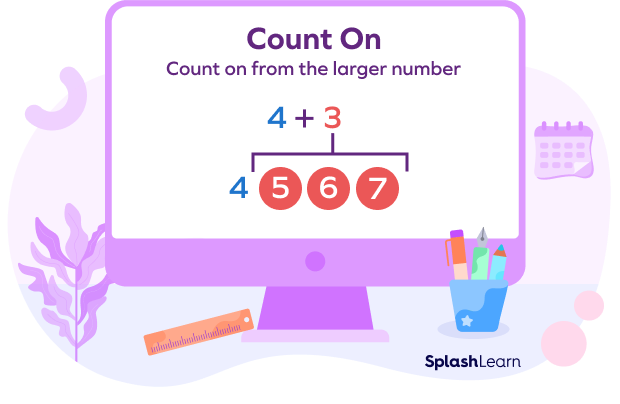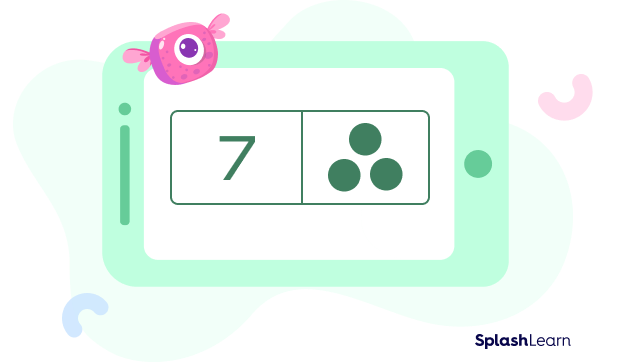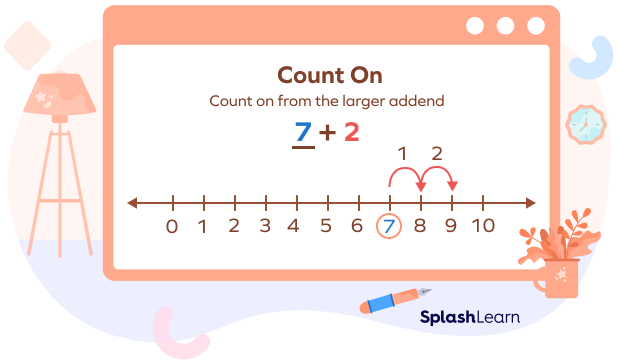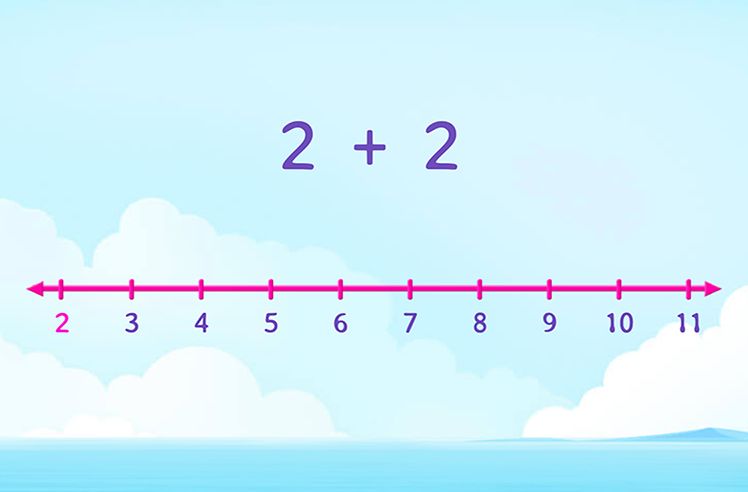What is Count On?
Count on in maths is a mental math strategy used to add numbers. Using this technique, a student starts with the larger number and “counts on” with the other addends to get to the sum.
For example, if the number sentence is 4 + 3, the student will identify 4 as the larger number and count on three more—“4 … 5, 6, 7”. The answer or the sum is 7. Using the count on math fact, students have to be able to “hold” a number in their minds and then add on to it.

Recommended Games
How Can This Technique Be Taught?
Initially, when asked to find the total objects in two sets, young pupils may have to count both sets. This method is called “count all”. Usually, kids use the count all strategy to add when they can not visualize what number a group or set represents.
Students start with a pre-determined number in the count on strategy and count up. They can work their way up to counting from larger numbers. It is also vital for children to understand the terms “bigger number” and “smaller number” when counting on. In an example of count on math fact, if they are presented with the operation 4 + 7, they must identify 7 as the bigger number, begin counting up 4 from 7, and stop at 11.
A few ways to reinforce this strategy are as below.
Recommended Worksheets
Dot Pattern
This technique, encourage students to identify the bigger number and then start counting on from there using the dots.
For example, 7 + 3

7 and counting on 3 dots as 8, 9, 10. So, the sum is 10.
Number line

Step 1: Identify and locate the larger addend on the number line.
Step 2: Use “jumps” to count the smaller addend.
Real-life Application of the Concept
Addition by counting on can be applied to various daily tasks such as setting the table, choosing items at the store, and participating in several games.
Counting is not effective for complex addition procedures. With time, the concept will become a part of students’ “addition toolkit.” However, it is an efficient starting approach for kids in their early elementary school years.
Conclusion
The count-on technique is valuable and interesting for the students to learn addition.
Solved Examples
Example 1: Find the sum by counting on.

Solution:
The larger addend is 7.
Start counting 3 more from 7 as 8, 9, 10.
So, the sum is 10.
Example 2: Using the count on strategy, find the sum.

Solution:
There are 4 dots.
Start counting 4 more from 12 using the dots as 13, 14, 15, 16.
So, 12 + 4 = 16
Example 3: Find the missing number using the number line.
8 + ____ = 10

Solution:
Using the number line, adding 2 to 8 gives us 10.
So, 8 + 2 = 10
The missing number is 2.
Practice Problems
What is Count On in Maths? Definition, Meaning, Strategy, Example
Count on to find the sum.

There are 5 dots.
Count from 11 using the dots as 12, 13, 14, 15, 16.
So, 11 + 5 = 16
Identify the expression representing the total number of circles in the figure below.

There are 5 red circles and 3 green circles. To find the total circles, count 3
more from 5, i.e,, 6, 7, 8. So, 5 + 3 gives a total number of circles.
Find the sum 45 + 2.
The bigger number is 45. Count 2 more from 45, we get 46, 47. So the sum is 47.
A class has 7 students. If 4 new students walk into the class, how many students does the class have?
Count 4 more from 7. You will reach 11. There are 7 + 4 or 11 students in the class.
Frequently Asked Questions
What is the difference between “count on” and “count all”?
Count all, as the name suggests, involves counting up all digits to get a conclusive result. For example, 3 + 6 would require counting from 1 to 9.
Count on involves counting from the biggest addend. For example, the same problem, 3 + 6, would require the kid to remember 6 and count three from it, i.e., 7, 8, 9.
When can count on be used?
Count on can be used in several instances, such as counting the number of treats you ate, counting toys while cleaning up, baking or cooking, or counting items/money at the grocery store.
What is the right age for learning to count on?
There is no age restriction for learning this concept. It only depends on the kids’ understanding of math. Whenever a child can conceptualize numbers and understand the concept of “count all”, they can swiftly shift to the “count on” technique and start their mental math journey.
What is forward and backward counting?
Forward counting is counting by adding one more every time. Backward counting is counting numbers in reverse order. We can count backward by subtracting one at every step while counting.




































